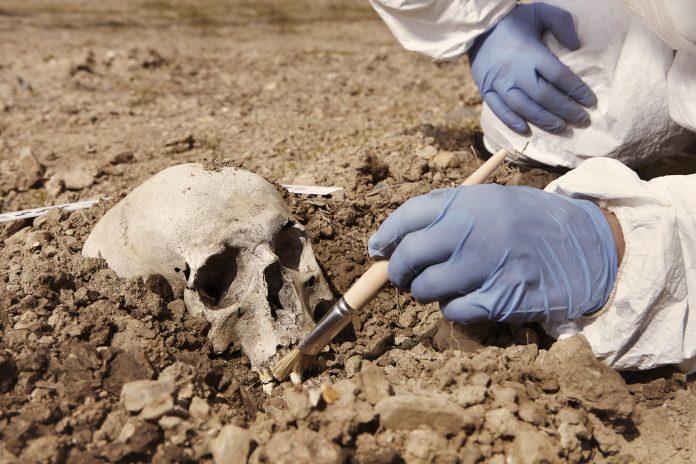Here are four advances in forensic science that could improve criminal investigation techniques across the globe
Throughout a criminal investigation, forensic scientists are charged with collecting data and evidence from crime scenes in order to provide a detailed retelling of how the crime unfolded. Convictions and understanding of a crime depend on how well these investigations go.
Crucially, science and technology breakthroughs have the ability make that ambition easier and more efficient.
What are the latest breakthroughs in forensic science?
1. Preserving bone proteins
Published in the Journal of Proteome Research, the research explores proteins in bones which can give investigators better insight.
Bone holds a reservoir of information that can be key in forensic investigations. Bone proteins can help determine how long ago a person died (post-mortem interval, PMI) whilst also revealing how old they were at their time of death (age at death AAD). However, ability to read these levels is highly dependent on intrinsic and extrinsic factors such as burial conditions. This limitation can hinder the potential application of molecular techniques to forensic sciences.
By comparing bone proteomes of exhumed individuals who had been entombed in mausoleums or buried in the ground, the researchers found several proteins whose levels were not affected by the burial environment. They say these proteins could help with AAD or PMI estimation.

2. A simpler way to view fingerprints
Published in ACS Applied Nanomaterials, the paper proposes a different method for latent fingerprint analysis.
Criminal investigations rely on analysing latent fingerprints found at crime scenes. However, current methods have their limitations – including low contrast, low sensitivity and high toxicity.
New research has devised a much simpler way to make fluorescent carbon dot powders that can be applied to latent fingerprints. These new multicolour carbon dot (CD) enables fingerprints to fluoresce under UV light with red, orange and yellow colours.
3. The true power of Proteomes for forensic science
Published in ACS Central Science, this paper generally looks to the future of proteomics.
This review article describes how forensic scientists are now turning their attention to proteins in bone, blood or other biological samples, which can sometimes answer questions that DNA can’t.
For example, unlike DNA, a person’s complement of proteins (or proteome) changes over time, providing important clues about when a person died and their age at death.

4. Hand-held device to instantly detect compounds
Published in Analytical Chemistry, this research looks at a new tool for measuring levels of critical substances in an investigation – like cocaine and explosives.
Researchers previously developed a “MasSpec Pen,” an easy-to-use and disposable handheld device integrated with a mass spectrometer for direct analysis and molecular profiling of biological samples. Now, they reveal the further developments being made for this technology.
The team have produced a new version of the MasSpec Pen that can quickly and easily detect and measure compounds, including cocaine, oxycodone and explosives, which can be incredibly valuable in forensics investigations.
Reflecting on application potential, the authors said: “Altogether, the MasSpec Pen sub-APCI system described enabled rapid and semiquantitative chemical analysis for forensic applications and could be further adapted and applied to other areas of chemical testing.”












This is twenty-second century forensic advancement. Can some of these be used in curing some on curable diseases?
Forensic science plays a very vital role in the Indian criminal justice system. The main task for forensic science is that to get adequate results and facts and the need is fulfilled by well trained medical examiner’s and forensic scientists and they are the determining factor in the ability of evidence to adequately represent the facts of the case. The benefit of forensic science is that it can be used in any criminal case; however, investigations of murder, rape, homicide, etc. Are those crimes that benefit the most from forensic science. For every case which is being tried in the court of law scientific evidence is required to prove the crime. And to make this task easier the Indian criminal justice system adopted the forensic science system for giving the scientific conclusion to the cases.
Forensic science has revolutionized the manner of detecting crime. Investigative procedures have seen a change over the course of the past two decades due to the constantly developing technologies used as a part of forensic science. It plays a major role in the justice system as it is majorly due to forensic science that crimes and criminals are identified. Since, it is a developing study and requires a lot of education, skills as well as experience, the Courts have often viewed forensic science as not being enough or completely reliable. Nevertheless, its role in getting convictions cannot be denied. Forensic evidence is more authentic than ocular evidence. Forensic science, as a form of scientific evidence, is advantageous to the criminal justice system.